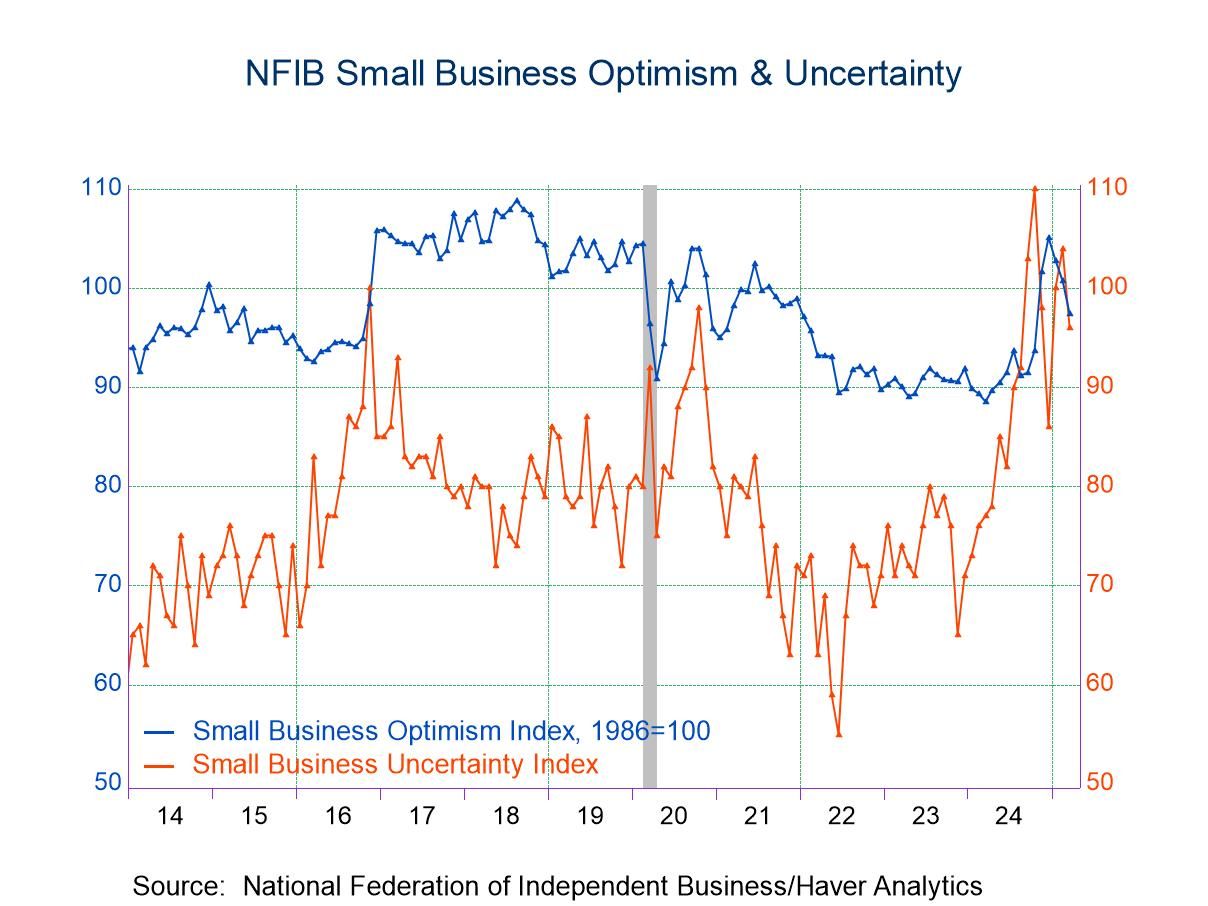- Annual gain falls to weakest in six months.
- Energy costs decline but food price gain picks up.
- Core goods prices ease & services prices rise minimally.
by:Tom Moeller
|in:Economy in Brief
- USA| Apr 10 2025
Unemployment Insurance Claims Rise Just 4,000 in Latest Week
- Initial claims modestly less than forecast.
- Continuing claims decrease, and prior week revised down slightly.
- Insured unemployment rate still 1.2%, now since January 2024.
- Europe| Apr 10 2025
European IP Still Mixed Across Early Reporters
The overall assessment of EMU-wide IP is not yet possible. But a slew of early reporters (eight in this table) along with two northern European countries have issued reports on manufacturing production in February. They are mixed in February with four up, and four down. January has five ups and three downs. December has five down and three up. So, the numbers cluster around 50-50 with some variation. The Northern European countries are showing monthly gains except for Norway in December.
The sequential trends showing growth rates over three months, six months, and 12 months, show three EMU nations with output falling and five increasing over three months, then four have output up and four down over six months. Over 12 months, five countries have output down and three with output up. The sequential growth rates do show a trend toward having more nations with expanding output. Germany, Finland, and Greece show decline on all three horizons. France shows output declines over six months and 12 months while Spain shows a decline only over 12 months. The northern European countries of Sweden and Norway log increases on all horizons.
From 12-months to 6-months to 3-months, the EMU median reading steadily progresses to a stronger reading. The median change at an annual rate is -0,7% over 12 months, -0.3% over six months and +3.0% over three months. Monthly data do not give a ‘clear look’ at trends. In December, the median output change on month-to-month data is -0.7%, which shifts sharpy to a gain of 0.9% in January. February saw the median also post an increase, a bit weaker than January at 0.3%. Still, it was an increase, and it was better than the December rate of -0.7%.
- Inventories trend higher y/y.
- Sales surge broadly.
- Inventory-to-sales ratio continues to decline.
by:Tom Moeller
|in:Economy in Brief
- USA| Apr 09 2025
Mortgage Applications Surge as Rates Fall in Latest Week
- Refinanced loans nearly double; purchase loan applications are strong as well.
- Fixed-rate mortgages decline.
- Average loan size surges.
by:Tom Moeller
|in:Economy in Brief
- Japan| Apr 09 2025
Japan’s Confidence Falls and Stays Low
Japan’s confidence is still weak and in a down cycle. Since reaching a sharp peak early in 2024, confidence continues to recede. All components are showing decline on all horizons from 12-months to 6-months to 3-months. This is an extremely uniform response.
Consumer confidence has a 15-percentile standing on data back to 2004. Components of the confidence index has standing that range from a standing at the 47.8% mark for the valuation of assets to a low at the 6.1 percentile mark for willingness to purchase durable goods.
In keeping with this weakness, the overall livelihood standing is at its 10.2 percentile.
- Economic & sales expectations weaken.
- Employment plans fall but job openings rise.
- Prices decline but price expectations rise.
by:Tom Moeller
|in:Economy in Brief
- USA| Apr 08 2025
U.S. Energy Prices Are Mixed in Latest Week
- Gasoline prices strengthen.
- Crude oil prices fall.
- Natural gas costs rise.
by:Tom Moeller
|in:Economy in Brief
- of2684Go to 72 page









